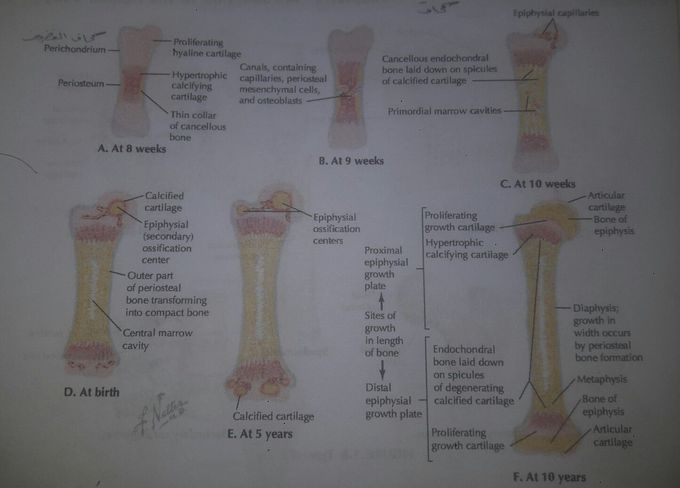

Reda_ja3likover 4 years ago

Bone Development Bones develop in one of the following two ways: • Intramembranous formation: most lat bones develop in this way by direct calcium deposition into a mesenchymal (primitive mesoderm) precursor or model of the bone. • Endochondral formation: most long and irregularly shaped bones develop by calcium deposition into a cartilaginous model of the bone that provides a scafold for the future bone. he following sequence of events deines endo- chondral bone formation (Fig. 👆): • Formation of a thin collar of bone around a hyaline cartilage model. Cavitation of the primary ossiication center and invasion of vessels, nerves, lymphatics, red marrow elements, and osteoblasts. • Formation of spongy (cancellous) endochondral bone on calcified spicules. • Diaphysis elongation, formation of the central marrow cavity, and appearance of the secondary ossiication centers in the epiphyses. • Long bone growth during childhood. • Epiphysial fusion occurring from puberty into maturity (early to mid-20s).
Other commentsSign in to post comments. You don't have an account? Sign up now!

